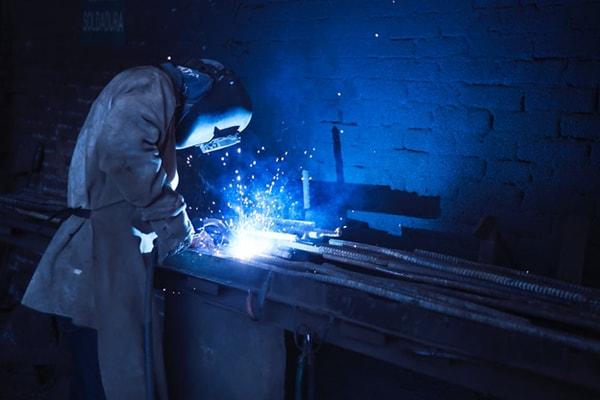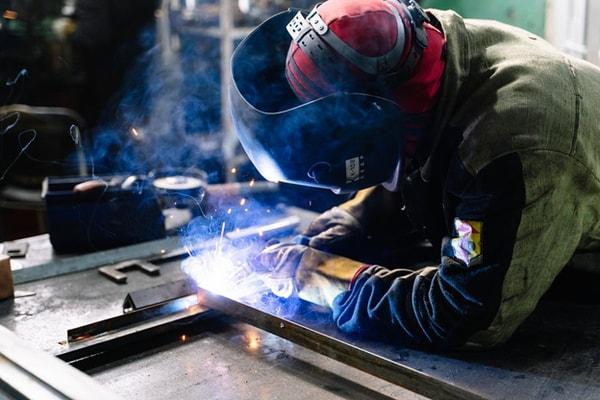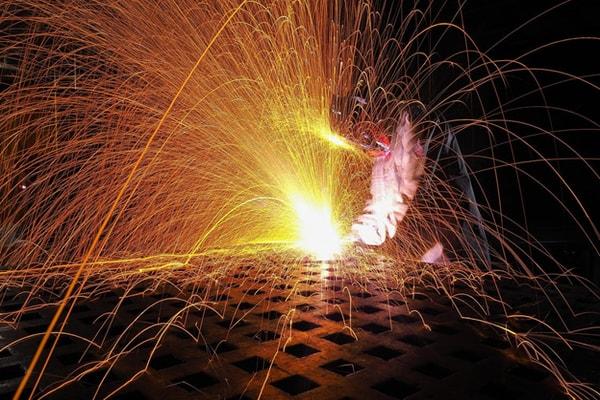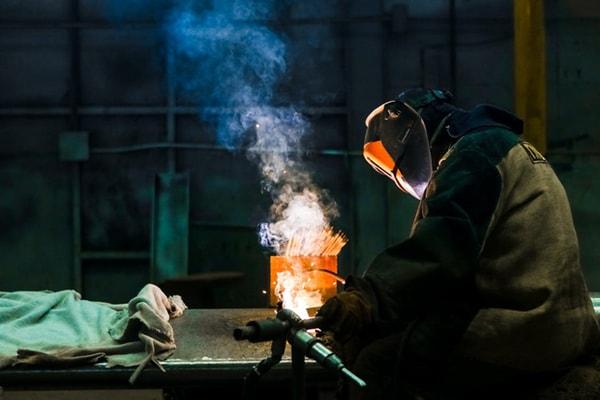People tend to use the word “welding” commonly without really understanding what it means. Yes, the word’s basic meaning refers to joining metallic parts together, but it is so much more than that.
So, what is welding?
Welding is a critical construction-related activity that is generally used for binding materials together through the application of heat. It is a fabrication process that involves the usage of heat, pressure, or both to fuse two parts.
Table of Contents
The Fundamentals of Welding
-
Apply for a degree in welding at NEIT!
Loading…
/**/
While the definition mentioned above might make it sound simple, welding is far from easy. Take a look at some of the fundamental principles of welding:
- Welding involves a high skill level and practical knowledge of subjects like physics, chemistry, and metallurgy.
- Welding is generally done on metals but is also used for fusing wood or thermoplastic parts.
- A completed joint is a weld joint or weldment.
- The parts fused are the parent material, while the material used to help form this weld joint is the filler material.
- Welding involves bonding the same type of material (metal and metal, or wood and wood) using heat welding, pressure welding, or both.
- Welders add metal to the welded joint to strengthen the weldment, while a shielding gas like carbon dioxide protects the joint from contamination through natural elements.
- Different metals react in different ways, depending on their physical, mechanical, and chemical properties.
- Heat can alter the strength, ductility, and malleability of metal. Welding can straighten out a warped piece of metal by applying adequate heat.
- Welding involves the heating and cooling of the metal – there is no other chemical reaction involved. However, the weld becomes weak if oxygen reacts with the molten metal. Using protective gases around the weld pool prevents oxygen and other contaminants from damaging the joint.
- Extreme heat can alter the crystalline structure and weaken any metal.
Benefits of Welding
Welding offers a variety of advantages, including the following:
- The technique creates a permanent weld and is excellent for the fusion of two materials.
- Using the right filler metal ensures strength and durability, producing long-lasting weld joints.
- In terms of costs, this method is quite economical in terms of materials, fabrication, and equipment.
- The process is versatile and flexible – used indoors as well as outdoors.
- Welded joints look good, smooth, and polished in terms of appearance.
- One of the fastest methods in terms of the speed of fabrication.
How does welding work?
A welding gun or torch melts a specific part of the parent metal. This process, conducted using high heat (typically with the addition of filler material), creates a molten metal pool so that it is easy to join a new metal part to it. Instead of heat, pressure is also used to weld metals together (pressure welding) depending on the type and thickness of the material.
- Metal welding: In most cases, using pressure and heat together over the base material enables quick and efficient metal welding. As mentioned above, a shielding gas safeguards the molten metal or weld pool from getting contaminated or oxidized.
- Plastic welding: In plastic welding, the surfaces are first prepared, followed by heat and pressure application. After this, the materials are cooled.
- Wood welding: Welding wood involves subjecting the materials to pressure before using the same heat that the linear friction movement creates.
Welding Types and Processes
The welding process depends on what the material is. In case you want to become a professional welder, you must understand all the different processes well.

The most popular types of welding processes include:
START YOUR WELDING CAREER
Earn your degree in Welding Engineering Technology from NEIT and begin your new career path today!
ASSOCIATE'S DEGREE
BACHELOR'S DEGREE
Stick Welding (SMAW)
Shielded Metal Arc Welding (SMAW), more commonly referred to as stick welding, involves using welding rods or sticks. The stick consists of the filler material and flux (which enable the welding process and protect the weld). Used across construction, shipbuilding, field repair, mining, manufacturing, and aerospace, this type of welding is affordable.
Gas Metal Arc Welding (GMAW)
Also called Metal Inert Gas (MIG) welding, the gas metal arc welding process uses a welding gun through which an electrode wire passes. The result is an electric arc that produces the heat required for welding. It also creates a shielding gas that protects the weld.
Used for manufacturing, automotive, industrial, and construction processes, this technique is easy and efficient.
Flux-Cored Arc Welding (FCAW)
Just like MIG welding, FCAW is great for outdoor welding work and general repairs. This technique finds its application in industrial welding, manufacturing, pipeline repairs, shipbuilding, and manufacturing. The difference between MIG and FCAW is that the latter uses a tubular filler wire that contains the flux.
Tungsten Inert Gas Welding (TIG Welding)
This particular type of welding uses a non-consumable electrode that consists of tungsten to produce the arc. Among the most popular types of welding, TIG welding creates a clean, smooth, and superior quality weld. Industries like art, automotive, and aerospace use gas tungsten arc welding.
Submerged Arc Welding (SAW)
SAW is a welding method that uses flux but is different from FCAW because the process happens under a blanket of granular flux. This is one of the safest types of welding because it creates lesser welding fumes and ultraviolet light. SAW is the preferred welding technique in vessel construction, industrial manufacturing, and structural construction.
Hyperbaric Welding
This is a process that welders use underwater. The wet welding technique utilizes stick welding, where the flux produces bubbles that act as a shield to prevent the welder from being electrocuted.
Some other important and often-used welding processes and techniques include:
- gas welding
- plasma arc welding
- electroslag welding
- electrogas welding
- oxyacetylene welding (gas welding)
- atomic hydrogen welding (AHW)
- carbon arc welding (CAW)
- energy beam welding (EBW)
- electron beam welding
- spot welding
- seam welding
- braze welding
- solvent welding
- resistance welding
Apart from these, laser beam welding, explosions, and vibrations are some of the other (rather extreme) processes used for fusing metals.

Welding Equipment
Welding is a specialized job that requires you to have a variety of essential tools, including (but not restricted to) the following equipment:
- Welding gun
- Welding torch
- Wire brush
- Chipping slag hammer
- Angle grinder
- Tape measure
- Welding magnets
- Soapstone marker
- Pliers
- C-clamps
- Electrode tip cleaners
- Flint strikers
- Cold chisels
- Screwdrivers
- Charged electrode
- Wire and electrode feed

Welding can be a high-risk job if you don’t use protective gear. Welders must use the following safety equipment at the job site:
- Safety glasses
- Welding helmet
- Welding gloves
- Heat-resistant jacket
- Leatherwork shoes
- Earplugs
Welding Joints Explained

Depending on what kind of joint configuration welders are aiming for, there are various types of welding joints:
Butt joint
A versatile and common welding joint, where you place two metal pieces together in the same plane, welding the side of each piece.
Tee joint
This joint features two pieces intersecting at a 90-degree angle, which forms a T shape. You can also create the joint by welding a tube or pipe onto the base metal.
Corner joint
As the name suggests, a corner joint meets in the corner, forming an L shape.
Lap joint
Used for sheet metal, this joint features two pieces of the metal placed on top of each other to create the lap joint.
Edge joint
Known to withstand force and pressure better than any other joint, the edge joint involves placing metal surfaces together to ensure even edges.
How to Become a Welder
A full-fledged program in welding engineering technology can enable you to become a professional welder with all the right skills and qualifications.
Check our Welding Engineering Technology
With an emphasis on welding techniques like oxyacetylene and air carbon arc cutting, brazing, SMAW, GMAW, FCAW, GTAW, and pipefitting, this welding technology program helps aspiring welders gain real-world, hands-on training. Apart from these subjects, you will also take courses in:
- Industrial OSHA safety procedures and policy
- Metallurgy
- Structural design
- Blueprint reading
- Computer-aided design and drafting (CADD)
- Destructive and non-destructive testing
- Precision measurement

Upon the successful completion of this program (which you can complete in as little as 18 months), you can kick-start your career and assume varied work positions like:
- Welding engineering technician
- Production welder
- Industrial engineering technician
- Quality control engineering technician
- CADD designer/technician
- Welding industry salesman
- Materials testing technician
- Underwater welder
- Aluminum welder
- Fabrication welder
- Maintenance welder
- Sub arc operator
- Ship fitter
- Structural Steel Fitter
Fast-track your welding career and get the edge with one of the best welding schools in the United States- sign up for our Associate Degree Program in Welding Engineering Technology now!
Thinking about a career in welding? Fill this simple form to get more information about how you can achieve your career goals with the New England Institute of Technology. Alternatively, you can also call us at 401-467-7744 or 800-736-7744 to speak to our academic counselors.
START YOUR WELDING CAREER
Earn your degree in Welding Engineering Technology from NEIT and begin your new career path today!
ASSOCIATE'S DEGREE
BACHELOR'S DEGREE
FAQs
Why do we weld?
Welding is a convenient way of binding metals together without adhesives, nails, or other fusing material. Not only is welding a quicker and more efficient technique of joining materials together, but it is also quite cost-effective and reliable (compared to other methods).
For heavy metal fusing work in industries or applications such as aerospace, defense, shipbuilding, mining, automotive, oil and gas, and industrial manufacturing, welding is the preferred technique.
How much does a welder make an hour?
According to the United States Bureau of Labor Statistics, the median salary for welders (welding, brazing, and soldering specialists) is $42,490 per year or $20.43 per hour.
What welding jobs pay over 100k per year?
A nuclear welder, military support welder, or an underwater welder may earn over 100k per year. But, as is the case with any career, the more you gain experience in the field, the more you earn. While entry-level welders might not earn over 100k annually, with the right exposure, experience, and skills, you can expect to climb up the professional ladder and see a corresponding rise in your salary, too.
Which gas is used in welding?
The most common gases that welders use in welding and cutting processes include:
- Carbon dioxide, argon, and helium (shielding gases)
- Acetylene, propane, and butane (fuel gases)

